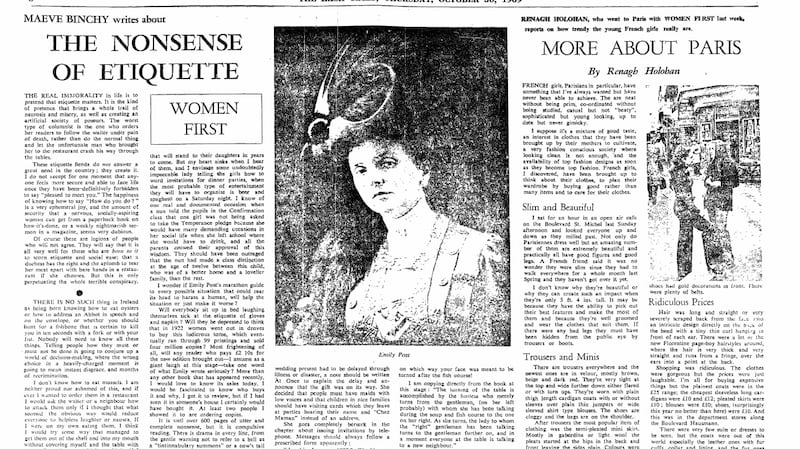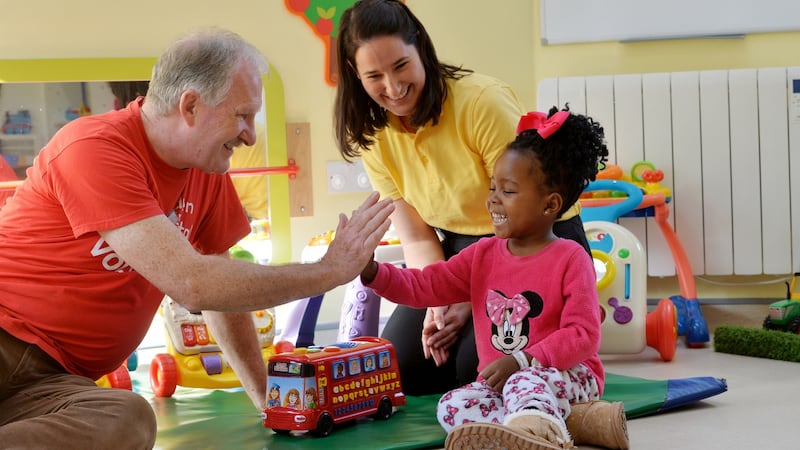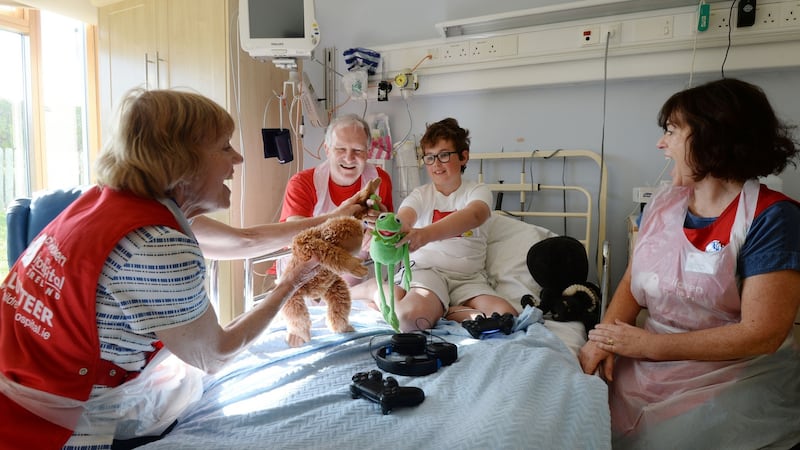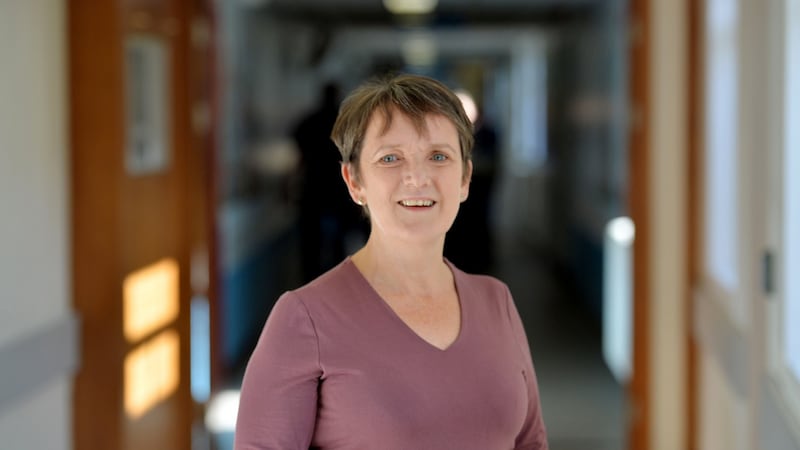Writer Maeve Binchy could never have foreseen that her deploring of "etiquette fiends", with their notions of social graces, would inadvertently kickstart a campaign for the welfare of children in hospital.
The connection between the niceties of napkins and woes in the wards is hardly obvious, but it is the pages of this newspaper that provided the link.
It started with a news story, almost exactly 50 years ago, on the surveying of 17 – out of an astonishing 24 – hospitals in Dublin that had child patients at the time. While the medical care was excellent, it reported, there seemed to be little heed of children’s need for emotional support and stimulation.
Imagine the distress of a small, sick child only being allowed to see their mother for as little as half an hour a day, as was the policy in a number of hospitals.
“There should be more awareness that the child’s separation from its mother is a traumatic experience which should be minimised as much as possible; children between six and 24 months do worst at present because of insufficient cuddling and stimulation,” was among the conclusions of the study conducted by the Irish committee of the Organisation Mondiale pour l’Éducation Préscolaire.
“Many hospitals like to avoid the crying sessions which occur after a visiting mother leaves her child in hospital,” said research psychologist Brother Richard Copsey at a presentation of the findings. However, he remarked that people should be more worried if there weren’t tears, as that would indicate a withdrawn or indifferent child.
It can’t have been easy for parents either, who, in even the more enlightened seven hospitals that had open visiting during the day, were never allowed to stay with their child.

Five days after this news report, Binchy used her column on the “Women First” page to get stuck into the “utter and complete nonsense” of etiquette, as outlined in a new edition of American Emily Post’s 1922 guide to the subject, running to more than 600 pages.
No prizes for guessing which seemed to exercise the minds of most readers of The Irish Times. A selection of letters, ranging from horror to approval of Binchy’s views, were published on various days the following week.
Have we become such an affluent society that which knife and fork we take matters more than the type of care we provide for our children?
“I find it very hard indeed to understand that a page intended for ladies never gives us tips on entertaining, on social behaviour, and that you have abandoned all the kind of thing (sic) we want to read about ladylike living,” wrote one (Mrs) Martina Doyle. “A woman’s page should be about cookery, sewing and housekeeping.”
But the week after that, on November 12th, 1969, Patricia Hemmens of Malahide, Co Dublin, wrote in to question society's sense of values. While a piece on etiquette had prompted a flood of letters, "an article spotlighting what amounts to the large-scale mental, if not physical cruelty of small children by depriving them of the emotional support of their mothers when in hospital, passes almost unheeded".
She continued: “Have we become such an affluent society that which knife and fork we take matters more than the type of care we provide for our children? Come to think of it, the children who suffer most in this way are probably those of the ‘lower classes’ whose parents are less able to stand up for their rights, but then they are the sort of people who ‘slurp’ their soup, so I suppose they don’t really count.”

In conclusion, she pointed out that it would only be parents like her, "getting together and making their voice heard in unison" that any improvements would be made. The response to Hemmens's call for action resulted some months later in her founding the Association for the Welfare of Children in Hospital (Ireland) later renamed Children in Hospital in Ireland(CHI), which will celebrate its golden anniversary next year. (Not to be confused with the new CHI acronym on the block – the rebranding of Dublin's hospital care for children as Children's Health Ireland, in preparation for integration of services through the new hospital being built in the grounds of St James's.)
Around the clock
On a recent Wednesday morning at the children’s hospital in Crumlin, Ann-Marie Reid says she can’t imagine not being allowed to be with her only child, Jamie (10), around the clock. She sleeps on a pull-out bed in his room on St Michael’s ward.
“He wouldn’t stay without me,” she says. After he was born at just 29 weeks, she hated having to leave him overnight in the neo-natal unit of the maternity hospital before he was well enough to bring home to Blanchardstown 11 weeks later.
This is Jamie’s 51st admission to hospital since then and the longest stay so far, at more than two weeks, because there is yet to be a diagnosis for his latest health issue. At this stage, he’s pining for his dog Alfie, who doesn’t have hospital visiting rights.
Reid praises the CHI play volunteers who not only help keep her son entertained by plying him with games, as he is confined to his room for fear of infection, but also give her the chance to take a much-needed break for a cup of coffee or something to eat away from the ward.
Since its foundation, the charity has been intent on making hospitals a happier place for sick children and their families. Working on the principle that play is part of the healing process, it now has a team of 450 trained volunteers, dressed in branded red tops, who go into 14 hospitals around the country.
Former national school principal Ainnle O’Neill joined their ranks two years ago, after he retired from St Ronan’s NS in Deansrath, Clondalkin. Sitting on the floor of the ward’s yellow-walled playroom and engaging with four-year-old Amisa Tambwe over a toy bus, his experience in letting the child take the lead is evident.
“I wanted to keep up the connection with children,” says O’Neill, who comes here every Wednesday, and who also lectures in local history at UCD. He gets a “great buzz” out of his work with CHI and, having always been aware of the huge pressures on parents when they have a child in hospital, is glad to give them a break from the bedside.

Jacinta Nisbet from Rathfarnham did her first stint of volunteering at the Eye and Ear Hospital in the 1970s, where, she recalls, the children were “bored stiff” and inclined to wander. “They had no toys and painting was frowned on – those kinds of messy activities.”
Her husband David, she says, has still never forgotten his traumatic experience of being a seven-year-old in a men’s ward in Jervis Street hospital in the 1950s, when a man in the next-door bed died.
At least they have both seen a vast improvement in children’s rights in their lifetimes. Jacinta’s first experience as a play volunteer inspired her to set up her own playgroup and, after she retired in 2011, she returned to the wards, this time in the very child-centred Crumlin hospital.
Suzanne Farrelly, a mother of three, became a CHI volunteer when her youngest child started school 15 years ago and has been coming to Crumlin every week since. She’s on St Anne’s ward, the hospital’s burns unit.
You'll forget who's sick and who's not sick – they're all just kids wanting to play
Due to the nature of their injuries, these children often have frequent return visits, so she gets to know them and their families well. Personally, she gets a “huge kick” out of volunteering and is always gratified by the look of relief on parents’ faces when she appears.
Her presence may give them time to have a shower, walk around the block or, she says, simply to make a phone call to update another family member without being overheard, as “children in hospital have very big ears”. Siblings are also frequent visitors, particularly during school holidays, and sometimes in the playrooms, “you’ll forget who’s sick and who’s not sick – they’re all just kids wanting to play”.
Even before Louise Klatt (24) left her native Germany to come to Ireland for a course in psychology and Jewish and Islamic studies at Trinity College, she searched online for voluntary positions in hospitals and found the CHI. Having trained and worked in paediatric nursing, she wanted to keep a connection.
Now, once a week, she dons a CHI tee-shirt to do a two-hour shift walking the corridors as a “just ask” volunteer. The hospital can be a bewildering maze for families, and visiting professionals, and nothing beats these human guides. They also bring colouring packs to the waiting rooms in A&E and outpatients to relieve the boredom of sitting around.

The hospital's deputy director of nursing, Fionna Brennan, says CHI volunteers "are in the fibre of what we do every day". They normalise life for children and help parents "to keep going when times are tough".
She has heard it said that families know the type of care they are going to get within the first few steps of arriving in a ward, “and if the first thing you see is a child smiling with a volunteer, it gives you that sense of ‘we’re going to be okay here’,” she suggests. St Michael’s ward caters for children with life-long illnesses, who would expect to have many admissions, so it is really important that they have good experiences here that they can remember when returning.
With its own team of professional play specialists, the hospital believes play is what children do and what they need to be able to do, Brennan adds. While medical procedures can interrupt that, “it is our job to bring it back throughout the day in whatever way we can”.
Emma Fratangelo from Texas is one of the play specialists who give procedural support, either talking children through treatment or providing distraction. She says they really appreciate the CHI volunteers who come in morning, afternoon and evening, and who link in with staff such as herself to find out which child, or parent, might need extra attention that day.
Paediatric consultant Dr Brendan O’Hare, who works mainly in theatre, says learning through play is vital for his young patients and the specialists help children understand the challenges they are going to face. However, play therapists are “a relatively restricted resource”, he points out, so the back-up from volunteers is a huge asset.
A member of the CHI board, he also knows how much parents appreciate being given “a little bit of space in a period of huge stress” by having somebody, who they can trust and who can interact with their children, to step in.
Evidence-based advocacy on behalf of families is another big strand of the CHI's work and the organisation is well-placed, says O'Hare, to articulate the issues for the whole family unit that come with having a seriously ill child, and to seek buffers and support on their behalf. He believes they have a good working relationship with the chief executive of Children's Health Ireland Eilish Hardiman in contributing to the planning of the new hospital and the paediatric outpatient hubs at Connolly, now open, and in Tallaght.
Financial hardship and waiting lists are the two big concerns for parents, according to CHI's chief executive Anna Gunning. While a hospitalised child is looked after, it's all the costs the parents incur that may not be so obvious. These range from accommodation, meals, travel and parking to childcare for siblings and loss of income.
The charity is conducting a financial research survey of families who have or have had a child in hospital, which it last did in 2004, to help inform its policy recommendations on improving supports. The closing date is November 10th.
At the time of writing, more than half of the respondents have a child who has had three or more visits to hospital in the past 18 months. One in five parents report that they have had to give up work; 25 per cent of families say they have had to borrow money from family and friends to cover expenses; while 30 per cent have taken a loan from a bank or credit union.
Taking stock in the run-up to its 50th anniversary next year, CHI is keen to expand its services, both to meet requests from Ballinasloe and Tralee hospitals to go in there, as well as to start attending child and adolescent mental-health inpatient units. It is also looking at areas such as improved support for siblings, who can suffer when parents’ energies and time are taken up by a sick child.
Currently working with 4.5 paid staff and an annual budget of €280,000 – the source being roughly a third each from Pobal, hospitals and fundraising/grants – CHI is looking for a new charity partner to meet the costs of recruiting, vetting, training and managing more volunteers. It has a waiting list of willing helpers but needs funds to increase their capacity to take them.
The CHI can be contacted through email info@childreninhospital.ie or on 01-290 3510.
‘A very positive memory’
One parent's tribute to Children in Hospital Ireland after her daughter's recent stay in Crumlin:
“Our daughter was nearing the end of her stay yesterday morning and utterly worn out with poor sleep, bloods, cannulas etc when your volunteer stepped in and took her through her last drip and subsequent allergy challenge with jokes and games.
“These tests went by unnoticed by our daughter who was too busy laughing at the volunteer’s jokes and trying to beat him at board games. Our little girl had grown weary of all of my attempts to jolly her along at this point and I am so grateful for the help but, more than that, our eight-year-old has a very positive memory of this experience, which has diminished any fear of a return visit.
“I heard her laugh at the other end of the corridor and I am sincerely so grateful for the assistance but more so to the positive impact on what could have been a tricky morning. She was sorry to see your volunteer move on to the baby wards and would happily return to St Joseph’s if a Ludo rematch was on the cards!”












